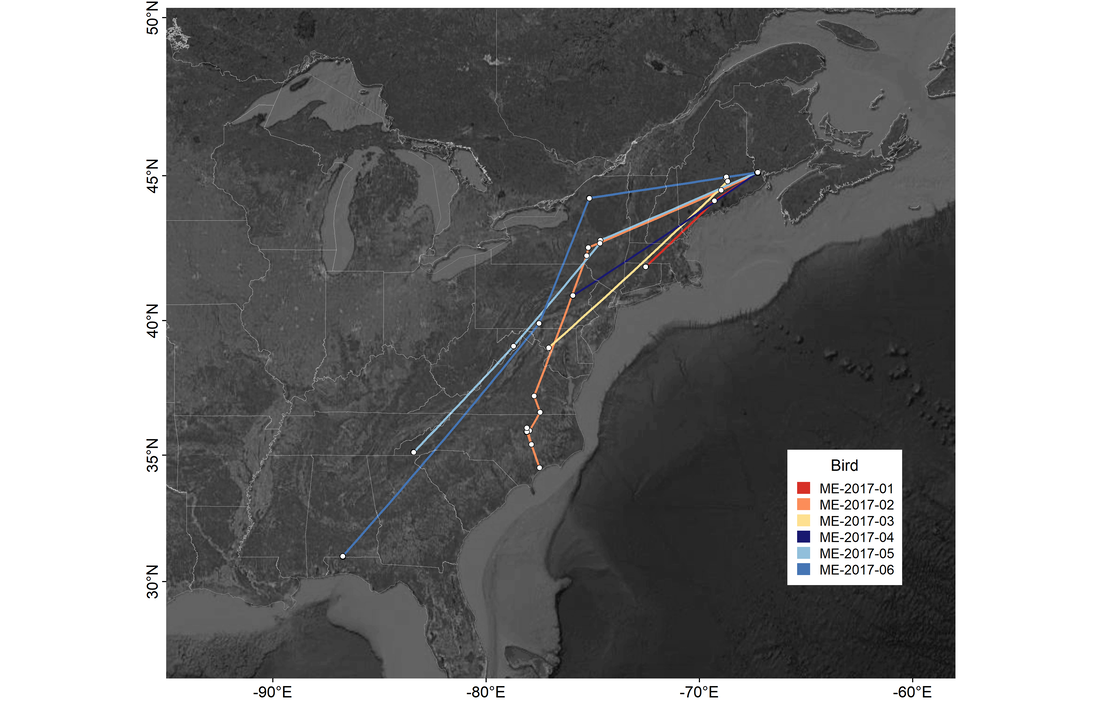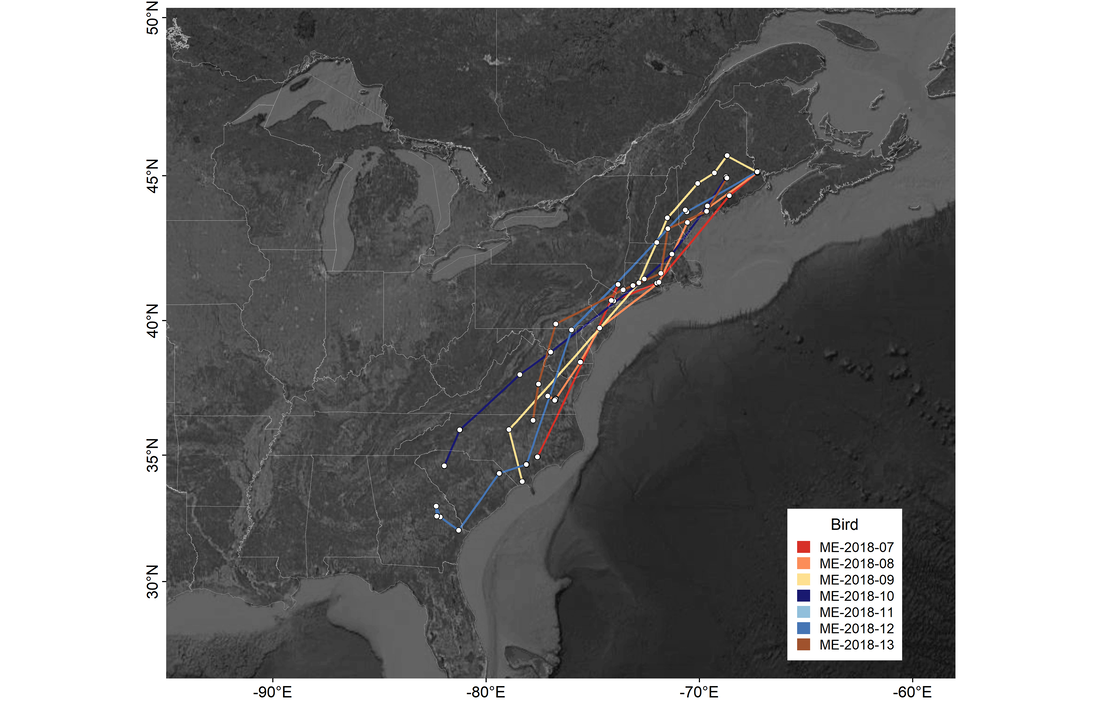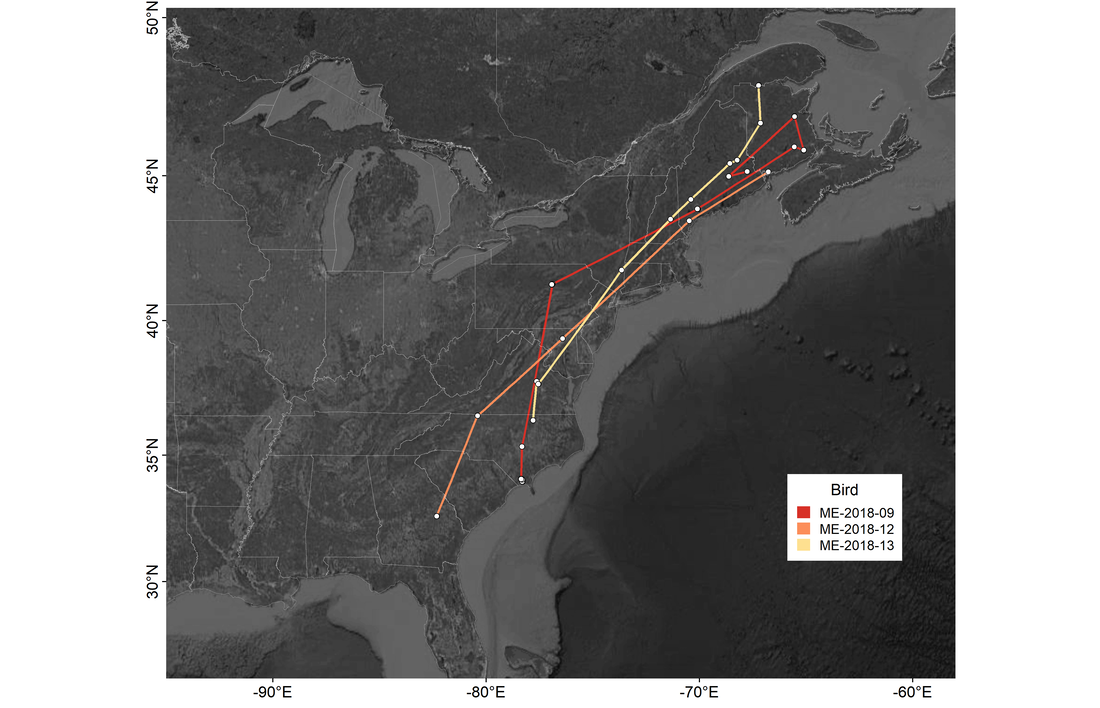|
Maine has a long history as a center of American woodcock research, and so its fitting that our project began here when we marked our first 6 woodcock with GPS tags during the fall of 2017. The data from those birds, pictured to the left, was instrumental in learning more about how our GPS tags work and the kind of data we could expect from them. We marked additional birds in Maine during fall 2019, and the project as a whole is coordinated from the University of Maine.
Below you will find additional migration maps showing movements of woodcock marked in Maine during both spring and fall migration. You can also click here to open an interactive mapping window to explore the migration of one of our Maine woodcock during fall 2018. |
Our work with woodcock in Maine has been supported by the Ruffed Grouse Society/American Woodcock Society, Maine Department of Inland Fisheries and Wildlife, Moosehorn National Wildlife Refuge and the US Fish and Wildlife Service, and the Maine Agriculture and Forestry Experiment Station at the University of Maine.


